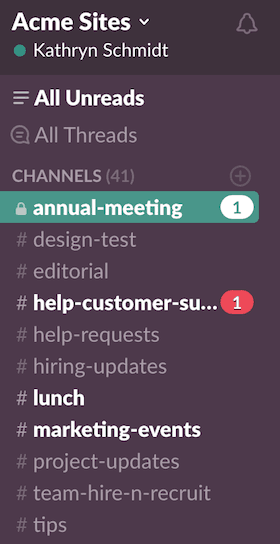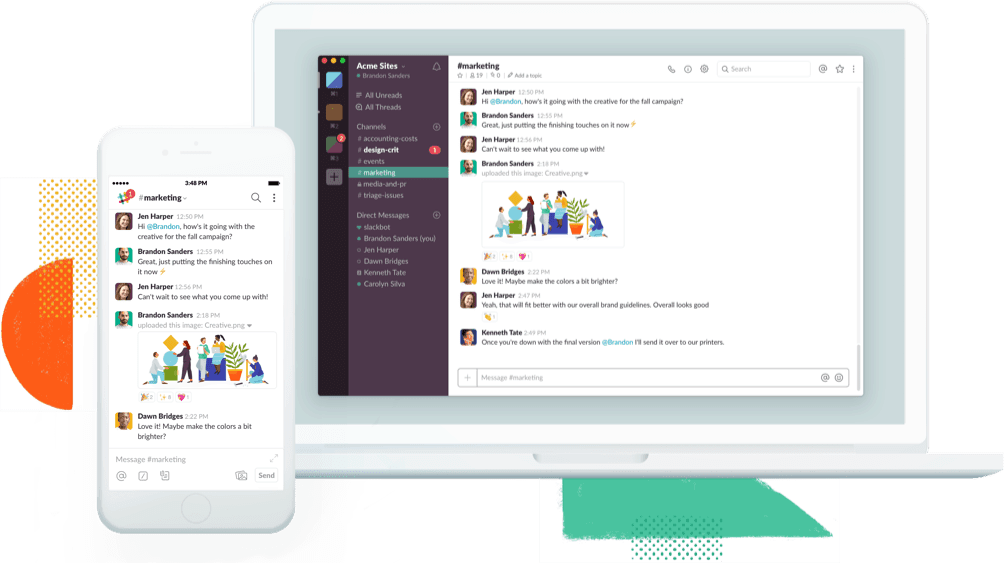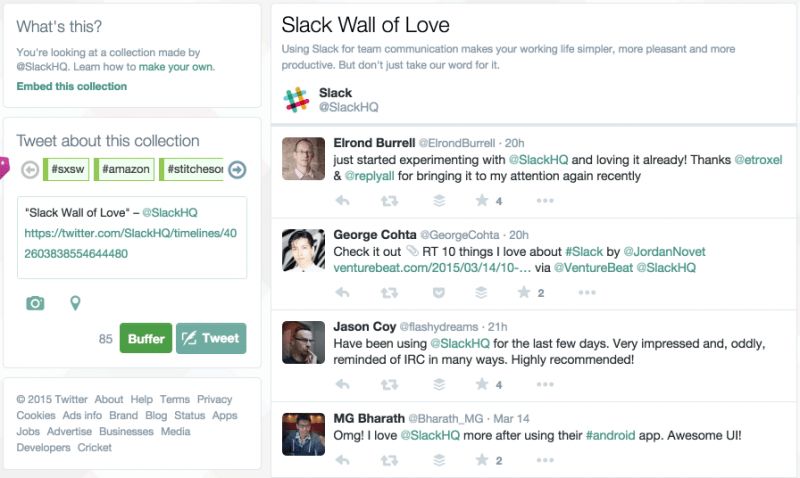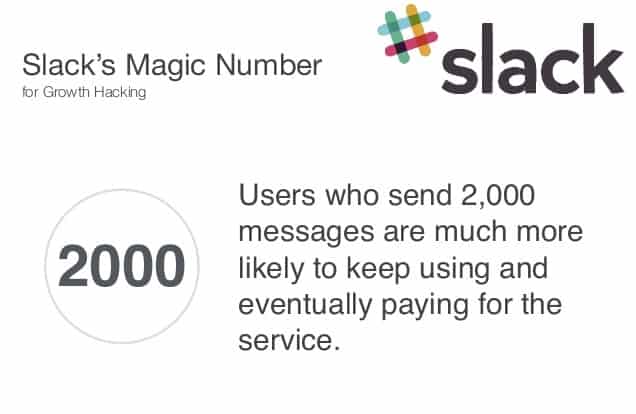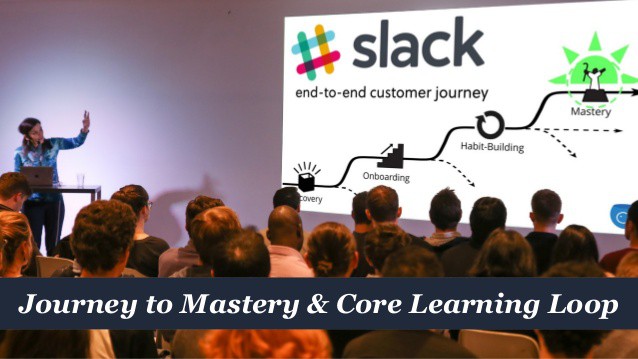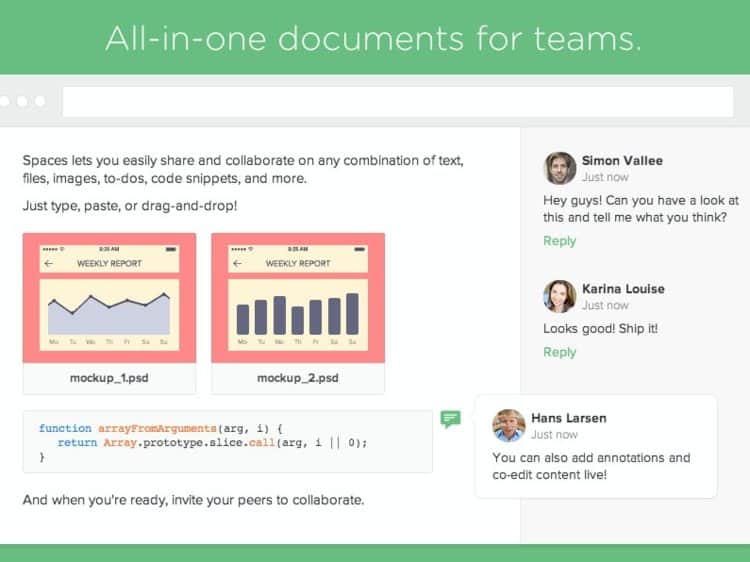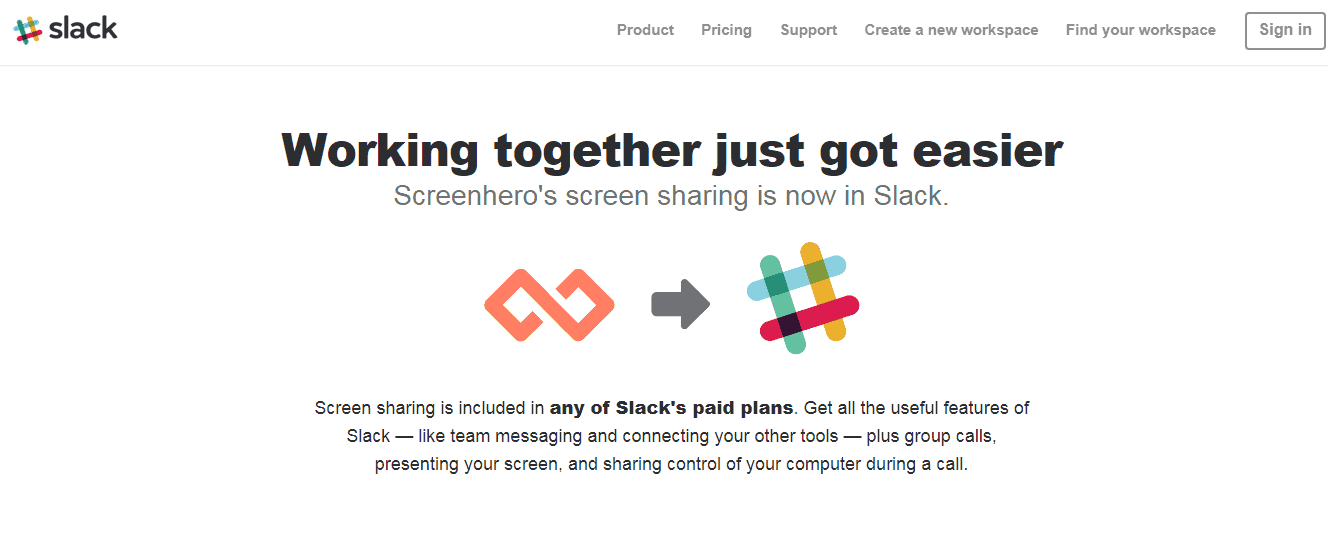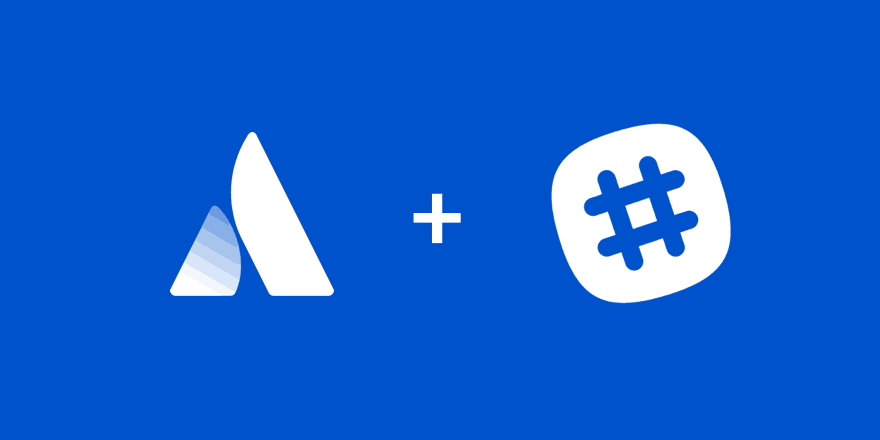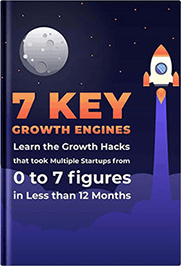
Photo Credits: Google
Slack, as we refer to it now, was initially known as Tiny Speck. The company worked on a number of online games, including the popular game known as Glitch – a flash based online game that took a team of highly skilled developers all over the country to create in around 4 years.
However, the team’s interest in Glitch gradually lessened and coincidentally they put their interest in IRC a communication tool used back in the ‘80’s era to collaborate and keep in touch over long distances as well as long periods of time.
IRC allowed the team to focus on other projects and at the same time ironing out the mailbox noise, a gesture that the team saw was good and they appreciated. It was not long though, the entire company made a move toward communication. “Never mind the part where we first tried to make a web-based massively multiplayer game and failed,” said the CEO and Co-founder Stewart Butterfield who is as well known to be the founder of Flickr
The growth and development of Slack as a group message service now known as Slack started as the year 2012 was ending by and as by 20 13 August, Slack was already running in a private beta.
In August 2013, Slack was launched and ever since, the app has made a quite outstanding growth. Few months after the launch in February 2014, the application had as little as 15,000 users who logged onto the system on daily basis.
6 months later in 2014 around August, the number of daily Slack users had risen to above 170,000 and later on increased to 280,000 users 4 months later in November the same year.
As by 2015 February, Slack boasted of over half a million daily active users. The app experienced thousands and thousands of new users week by week. Besides, there more than 300 million messages being sent collectively every month and that meant there was more engagement with the app (more than 2 hours) daily.
Slack released their latest performance figures and as we talk, the company boasts of 8 million total customers, 3 million of who are paying customers. That’s an improvement from last year’s(2017) statistics which showed that they had 6 million customers, 2 million of who were paid subscribers.
The remarkable growth with the engagement as an added advantage drew a lot of attention from a number of investors, which we will look at it in details later on in this case study but as we talk, Slack is officially $5.1billion worth.
It has been only 5 years! Well, that is extraordinarily outstanding. In this guide therefore we are going to look at what they(Slack) have done that has stuck their odds that high in favor of the organization’s growth.
We will discuss the following :
1.Introduction
2.Strategies that sparked up Slack’s fast growth
- Definition of their own unique market and identification of the user
- Creating a highly useful high-end product
- Nailed the service/ product experience and focused on doing just little important things extraordinarily well
- Gaining initial users through friends and people they knew from other organizations
- User/customer Response and user feedback
- Growth and development through spreading the word via mouth
- Launching the freemium model which powered ‘word-of-mouth’ for bottom-up growth
- Onboarding and user experience and the app’s interface
- Magic number strategy that supposedly works real magic in terms of retention of users/customers
- Hooks
3.Acquisitions
4.Funding & Monetization
5.Prospective Concerns & Future Plans
Introduction
Photo Credits: a2apple
Slack is a cloud-based collaboration hub set with tools and services to connect a team or an organization to get your work or things done.
The app helps you to collaborate just as you could to in person or in presence. Additionally, the app enables users to stay connected, get things done faster, and communicate efficiently.
For introduction purposes, we will discuss briefly the Slack basics, the features/pieces, and the plans. However, if you want to know more of the app’s functionality you can find out here.
1. Slack Basics
Slack consists of the people who are grouped into various levels that make up a Slack team. They include a workspace owner who makes a slack workspace and then promotes workspace admins who help to manage the team. Together, they onboard and invite members.
2. The Pieces or Features
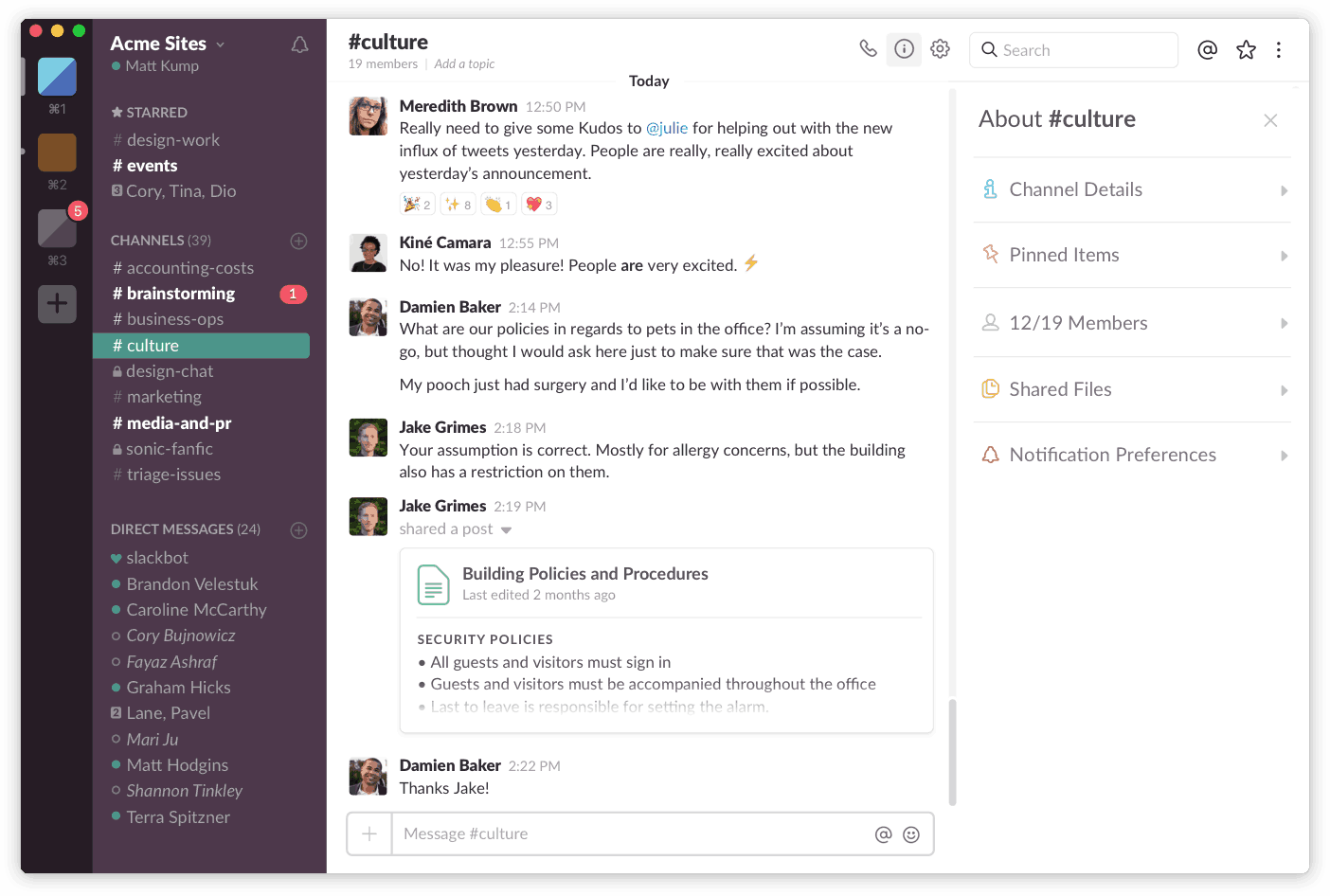
Getting to know how Slack works, helps you to know all the pieces fit together that makes Slack function. There are core features that include; messages, search, channels, and notifications.
Messages enables users share a message in the channels or you can as well send a direct message (DM) to someone.
Search is a way that users usually narrow down when trying to find out what they specifically require.
Channels are the ones that make up Slack, and it is through them that most of the communication will occur. They are of 3 types: Private Channels, Shared channels, and Public channels each of which functions differently.
Notifications is a Slack feature that tells the user about what things need attention.
Photo Credits: Slack
3. Slack Plans
For the teams, organizations or companies that use one workspace, you can choose from 3 pricing plans which include; Standard, Free or Plus
For prominent or big companies, the Enterprise Grid Plan merges multiple workspaces into one and connects the whole organization.
Strategies That Sparked Up Slack’s Fast Growth
1. Definition of Their Own Unique Market
There have been other office chat apps like Skype, HipChat among others for years even before Slack was launched, but they never experienced a remarkable early growth as Slack has done. Slack created a unique market that did not exist before.
Creating a unique market is seemingly one of the major accomplishments they achieved and Slack had the ball rolling regardless of there being a number of prominent competitors at the time.
Butterfield the CEO of the brand said that around a third of users at Slack’s have switched from other central messaging systems like IRC, Campfire, HipChat. He continued and said:
When we asked the other 70 to 80% what they were using for internal communication, they said, ‘Nothing.’ But obviously they were using something. They just weren’t thinking of this as a category of software.”
Source : Firstround
The team realized that most of the users who had said that they use “nothing” had been actually using a hotchpotch of diverse applications, some of which were even more seemingly ill-suited. As the CEO asserted:
“It’s a lot of ad hoc emails and mailing lists. Some people on the team might use Hangouts, some use SMS. We see groups that use Skype chat, or even private Facebook groups and Google+ pages” and that is why most of Slack’s effort in terms of selling solutions to the existing problems was to highlight that there are challenges to deal with first. However, by contrast, Butterfield goes on to assert that:
If you’re building a sales team for your startup, you know you will absolutely make a decision about what CRM to use. It’s a no-brainer. If you’re a software development team, you are absolutely going to choose a system for source control. That’s a known category.”
Source: Firstround
Centralized messaging systems such as Slack have not been in existence for long and it tends to explain why most people do not entirely understand why and when they would need them.
For that reason, product training, as well as market education, were, have been and are still Slack’s prime concerns since the day the app was launched.
In fact, a fortnight prior to the application’s launch, Butterfield, the CEO and Co-founder, sent a detailed memo to his team that was based initially at Tiny Speck.
The memo was worth a read and he articulated the significance of not only just creating something worthwhile but also trying to help people around the world know its utility. The memo read:
Just as much as our job is to build something genuinely useful, something which really does make people’s working lives simpler, more pleasant, and more productive, our job is also to understand what people think they want and then translate the value of Slack in to their terms.”
Source: Medium
Stewart continued explaining that the notion above was just but a traditional marketing strategy and somehow just a little more and different. Butterfield claimed:
Our position is different than the one many new companies find themselves in: we are not battling it out in a large, well-defined market with clear incumbents (which is why we can’t get away with “Other group chat products are poisonous. Slack is toasted.”). Despite the fact that there are a handful of direct competitors and a muddled history of superficially similar tools, we are setting out to define a new market. And that means we can’t limit ourselves to tweaking the product; we need to tweak the market too.”
Source: Medium
The initial growth of Slack as a company majorly started by building a unique market that had not existed before. The team aimed to sell a problem-solving concept that gave a solution to problems that most individuals had no idea they have. Butterfield said that they were trying to sell an innovation and not a new product. He claimed:
We are unlikely to be able to sell ‘a group chat system’ very well: there are just not enough people shopping for group chat system (and, as pointed out elsewhere, our current fax machine works fine). … That’s why what we’re selling is organizational transformation.”
Source: Medium
He continued and used Acme, a well-known Saddle Company to exemplify his idea of “selling innovation”. Whilst Acme merely sold saddles as products basing on factors like embellishments, durability, styles durability, and leather quality, they could sell horseback riding as innovation. Butterfield went on and said:
Being successful at selling horseback riding means they grow the market for their product while giving the perfect context for talking about their saddles. It lets them position themselves as the leader and affords them different kinds of marketing and promotion opportunities (e.g., sponsoring school programs to promote riding to kids, working on land conservation or trail maps). It lets them think big and potentially be big.”
Source: Medium
Stewart continued to explain that defining your own market was the best way to find a market suitable for your product, is to He highlighted that his idea of selling the concept was far not entirely new.
Notable instances that have been known to use this marketing strategy include Lululemon who sells yoga as an activity entirely rather than yoga clothes only. Harley Davidson also sells dependence and freedom despite being known to sell motorcycles.
The concept of selling the innovation rather than the product has been very critical to Slack’s early growth. The group was not just selling their software but “less effort in the management of knowledge” or “minimizing the cost in communication” or “quick decision making” or “75% reduction in email use” or “reliability and availability wherever you go in terms of team communication” Butterfield says
We’re selling a reduction in information overload, relief from stress, and a new ability to extract the enormous value of hitherto useless corporate archives. We’re selling better organizations, better teams. That’s a good thing for people to buy and it is a much better thing for us to sell in the long run. We will be successful to the extent that we create better teams.”
Source: Medium
From his discussion, most individuals and or companies acquire product software for the needs they at that time know they have or better yet for the tasks they are required to do. However, as aforementioned, a handful of Slack’s users had felt that they required an internal communication software.
That was why selling stress relief, productivity, and organization, in general, helped Slack in the name of appealing to those prospective customers who were not searching for just a communication software.
2. Creating a Highly Useful High-end Product
Life is too short to do mediocre work and it is definitely too short to build sh*tty things.
Stewart claimed.
Aside from that concept of selling the innovation, attention to details is one other most crucial factor that led to Slack’s growth. The Slack team created a not only authentic but also a reliable high-end product.
The Slack team stayed together and worked extra hard in ensuring that the app is simple in terms of setting it up. Additionally they made sure the app was pleasant to use, was as reliable as a normal mail, and made sure that its compatibility to a variety of other services was outstandingly remarkable with more functionality of the app coming from a Mac desktop app and mobile app.
By November 2014, at least half of people using Slack were on the Mac app while 55% used the software via both desktop and mobile on certain days. In a previously written memo by Butterfield explaining that they “do not sell Saddles” before Slack-Preview was launched, he recognized the intuitive tendency to overlook minor problems and irritations in their product.
Nevertheless, at the same time, he reminded his team that they required to execute “an exceptional flawless job” he explained
It is especially important for us to build a beautiful, elegant, and considerate piece of software. Every bit of grace, refinement, and thoughtfulness on our part will pull people along. Every petty irritation will stop them and give the impression that it is not worth it”
Source: Medium
He continued by encouraging the Slack team to find out the minor issues and solve them predominantly by viewing Slack like they would have done on another application. Butterfield said:
Putting yourself in the mind of someone who is coming to Slack for the first time — especially a real someone, who is being made to try this thing by their boss, who is already a bit hangry because they didn’t have time for breakfast, and who is anxious about finishing off a project before they take off for the long weekend — putting yourself in their mind means looking at Slack the way you look at some random piece of software in which you have no investment and no special interest. Look at it hard, and find the things that do not work. Be harsh, in the interest of being excellent.”
Source: Medium
Stewart was seemingly strict and straight to the point and that paid off big time because Slack as a company has stood out among the rest of similar messaging companies. One of Slack’s user’s, Daan Frommer of Quartz described the app saying it is “an air of quality that many apps lack—both from startups and big companies.” Daan also asserted that
For example, when you paste a link into a Slack chat, it automatically pulls in the title of the webpage and a snippet of content, potentially including an image. If it’s a YouTube video, you can play it right within the chat. If it’s a link to a tweet, it displays the whole tweet. And you can search all of that information. This elegant sophistication might give companies more confidence to invest time and money into it.”
Source: Quartz
Ashita Achuthan An enthusiastic user on Slack claimed:
Let’s face it, Email is clunky and starts to come apart when you’re trying to communicate announcements, updates or just check-in in an ad-hoc manner with teammates. Throw in all of the things that are happening in Wiki, JIRA, Asana, Trello, Dropbox and other channels at the same time, while trying to manage multiple threads of conversation and you have a herculean task on your hands“
Source: Quora
The app has done a good job by allowing users to make ad-hoc channels in which they are able to push or share information across a large group of people.
3. Focus On a Few but Core Features
Photo Credits: Slack
An influential blog post from Paul Buchheit, the Gmail creator was one idea that was remarkably vital to Slack’s founders during its development was. The blog post was about “If your product is Great, it doesn’t need to be Good.” To put it in other words, his sentiments were that you would rather have to do little things outstandingly well than to struggle making the whole thing entirely flawless. He said:
All of the founders here are past the stage where we have a lot of ego about building something our way. We set ourselves an incredibly high quality bar, and we’re just not going to be happy if we don’t reach it. … We don’t cut corners, and we try to focus on the few things that are most important to our product vision.”
Source: Firstround
That said, it does not mean that the founders of Slack did not care about the minor features of the software they were coming up with at the time. It is just that they focused their efforts on the main features basing on assumptions that people would not realize all the team’s early iterations they might have left out if they delivered those great features.
As for Gmail, their primary features were threaded conversations and the then incredible 1gig storage.
Discussions at Slack about their main features followed and after some time, the team eventually agreed on synchronization, file sharing, and search. Stewart said:
We had a lot of conversations about choosing the three things we’d try to be extremely, surprisingly good at. And ultimately we developed Slack around really valuing those three things. It can sound simple, but narrowing the field can make big challenges and big gains for your company feel manageable. Suddenly you’re ahead of the game because you’re the best at the things that really impact your users.”
Source: Firstround
Buchheit’s perception of good versus great is not just the only thing that influenced growth of Slack. In fact, from Slack’s CEO, Stewart sentiments, Google as a search engine has set standards at the top in regarding to what users anticipate when they hear the word ‘search’. Stewart said “
People need to feel confident that when they read a document or conversation, they don’t have to worry about labeling or storing it — that they’ll be able to find it again later if and when they need it.”
Source: Firstround
Stewart said that they realized that the other competing messaging channels were not favorable in terms of ease of use on various devices that was among the wearisome things they wanted to curb.
We all know that compatibility really matters and that made the team focus more on what they called ‘leave-state synchronization’, a feature that allows users to start from where exactly they left regardless of the devices they were using.
In instances of file sharing, the team chose to focus on creating a software that was able to paste images or drag & drop files quickly, in the name of achieving a simple intuitive user interface.
These features may not seem so flashy but they makeup Slacks’s major functionality, purpose and or use in a manner that users find it very sensible. Additionally, it is easy to interact with especially for the most active users who interact with the app on daily basis or even the whole time.
4. Gaining Early Users
By March 2013, the app had already taken shape and the team was at that time using the app for themselves. However, they knew they needed to know how the app would perform out there.
On around May 2013, they began cajoling and begging friends and or people they knew from other companies and organizations including Rdio and Cozy to get and give Slack a try.
Around 6 companies were used to ‘try’ the product and they gave the Slack team an insight into how the app exactly functioned for organizations of different sizes and needs. That really helped the team in terms of working out the initial service’s hooks.
Stewart said:
Rdio, in particular, was much bigger than us. They used it with a small group of front-end developers for a while but then it spread to the whole engineering group and then to all 120 people in the company. … Suddenly we saw what the product looked like from the perspective of a much larger team, and it was pretty gnarly.”
Source: Firstround
The progression went on over the year 2013 and the team shared Slack successively bigger groups, observed its functionality and made changes and improvements when they called upon. With time, the team was ready to launch their software with a bigger audience.
The app’s Preview was released in 2013 August. Later on, the app was released in beta form. Stewart claimed that he and his team did not want to refer to it as beta as people out there would think that their product would turn out to be unreliable and or flaky.
Just on the exact day of the launch, Slack beta got around 8,000 ‘invitation-requests’ of users who wanted to join. In just a fortnight, the number doubled.
The team’s prior involvement with Flickr meant the team had plenty of press initially, with ReadWrite, and VentureBeateach of which posted various articles about the company. 2 of them went on to describe Slack as the ultimate ‘email killer’ after the release of the Slack Preview.
From Stewart’s approximation, such kind of new stories being said, written and published about them accounted for about 20% of their success in terms of media popularity while on the hand the 80% was merely for people who were posting on social media about the same published article(s).
Butterfield said “I almost never go to news sites—it’s overwhelming how much content is out there. But I will pay attention to what my friends are picking up and sharing.”
The app’s gain and press initial press, which was achieved thanks to fans and friends who posted about it on social media platforms, was the core activity that facilitated the drive to early surge of invitation requests.
The preview functioned for around half a year and as Stewart claims,
From August 2013 to February 2014, we went through those initial 15,000 sign-ups — and more that we got over the course of time — and incrementally improved the new-user experience until we felt like we had gotten all the low-hanging fruit.”
Source: Firstround
5. User/Customer Feedback & Response
Photo Credits: Google
The team has embraced to listen to, learn from, and respond to feedback from not only the clients’ point of view but also development and growth purposes. At some point, Slack recorded close to 8,000 request tickets from Zendesk and further 10,000 tweets from users on twitter in a just but a month.
Whilst that was definitely a huge undertaking, the team takes the response to user feedback quite seriously. Stewart asserts:
Whenever [team members] hear something new that seems like it’s actually a really good idea — or it’s a pretty good idea but it’s very easy for us to implement — it gets posted to a channel where we discuss new features. That is an ongoing, daily thing. There have already been 50 messages posted today.”
Source: Firstround
The organization looked at their customers as testers in the early days and they had to pay more attention to the teams they thought would be successfully using their product. Suppose they reported an error or something that was not functioning, the team made it the first priority to fix it as soon as possible.
During its launch, Slack had 3 members merely devoted for customer experience exclusively – a combination of customer service and quality assurance that involved “everything from parsing customer feedback and routing it to the right people to fixing bugs.”
As we talk, customer care team at Slack consists of 18 employees and 6 of them work solely on twitter 24/7. Even though Slack has received plaudits from Twitter lately, that was not the case initially.
Nonetheless, Butterfield confirmed that initial criticism was always welcome as “every customer interaction is a marketing opportunity. If you go above and beyond on the customer service side, people are much more likely to recommend you.”
6. Growth by Spreading the Word by Mouth
Photo Credits: Medium
As by 2014 around October, Stewart credited most of Slacks’s early success in terms of growth and development to the spread the word by mouth.
He claimed: “The growth has been completely insane and almost entirely on word of mouth. In fact, we just hired our first marketing person, but he doesn’t begin until next week.”
In most companies/organizations that acquired Slack, users seemingly spread the app from one group to another until the whole organization was interacting through Slack.
According to Stewart:
It’s probably true that no one is going to go for a giant switch over from SAP to WorkDay, even though it would probably save them money because that involves hundreds of thousands or millions of dollars that gets decided top-down during a budgeting process.”
Source: Fortune
Sterwart continued and highlight that their paid service merely charges a few cents in a day, a fee “that people put on their credit cards and no one even really notices that it’s happening.” The CEO during an onstage interview at SaaStr conference gave examples of large organizations like Adobe.
He said that has a handful of teams that run instances of Slack by themselves and that makes it easy for Slack’s finance managers to close bigger paid deals. as they(Slack team) do not have salespeople.
This growth strategy has been achieved through large public groups of people using Slack and mostly they have aggregated around by sharing interests and through twitter as well.
Twitter has been particularly been quite important and Butterfield has applauded Slack’s big deal of optimistic buzz they found on the platform. He confirms:
We bet heavily on Twitter. Even if someone is incredibly enthusiastic about a product, literal word of mouth will only get to a handful of people — but if someone tweets about us, it can be seen by hundreds, even thousands.”
Source: Firstround
Photo Credits: Twitter
7. The Freemium Model
Like a number of other prominent Saas companies like Dropbox and Evernote, Slack functions on a freemium form as well. Dan Frommer of Quartz denotes the freemium model as a really useful free service and he went on to explain saying, “many groups (including Quartz) are happily communicating on Slack for free.”
As of 2014 at around November, the company recorded in excess of 73,000 subscribers who paid for the premium package nonetheless which comprises of a complete message archive. The benefits can be easily be observed as more work is being done through Slack and the ability to do conversations and call up details through search is worth the cents paid for the service.
In the same year as of November, Josh Pritchard Slacks Business analyst claimed that Slacks total subscription income grew at a rate of 8% without adding the new sales they had made. Josh continued to highlight and said, “This is, as far as I know, unheard for an enterprise SaaS Company less than seven months after launch.”
At the beginning of 2015, around February, Eugene Kim of Business Insider reported that paid users at Slack had risen to 135,000 and that the company added an extra $1 million that recurred in every eleven days to the $12 million in the yearly recurring income that had been established in the previous year.
In November 2014, the conversion rate of free to paid conversion rose to thirty percent. Ciara Bryne and Nir Eval cited that as one of the topmost in the enterprise business. The freemium model has a number of features that are so conducive for users
8. Onboarding
Video Credits: Youtube
Slacks simple and painless onboarding has been one of the key features in the success of Slack. Dan Frommer asserts that:
Many competing group-messaging or collaboration services are either over-engineered or poorly designed. Slack has a great balance. It has an obvious interface, focused around channels—communal chat rooms, typically organized around a topic or team—and direct messaging. Chats can be live in real time, or asynchronous, depending on who’s online when. Teams can sign up and start talking to each other right away.”
Source: Quartz
The sign-up process is quite simple and straightforward. This means that new users can simply enter their email address and receive a link that when followed, leads to a registration form that is very straightforward where you enter the required information.
After that, new users can then add one-team members through a command prompt, which is the most crucial stage, and then there is integration with various apps. From Butterfield’s point of view “ Most people who fill out the form and hit submit — more than 90% — never invite anyone or start using the software.” But he continued saying,
However because one active team has an average of eight or nine members, we have close to 250,000 daily active users. We have more daily active users than teams that were ever created. So we lose a bunch, but the ones that we get to really try it out stick with it.”
Source: Firstround
9. Slack’s Magic Number
Photo Credits: Slideshare
At least everyone in the world has what they consider as the lucky number, and so do a number of companies all over the world too. First Round confirms that there is commercial-based typical metrics for retention and engagement however, “at the end of the day, only you can really determine your company’s magic numbers—the numbers that shed light on who is really using your product (and how you can get them to keep using it).”
Source: Firstround
Just to give examples, Twitter as a social media platform, boasts of the magic number 30. That is to say, Twitter users who followed up with others were more likely than not remain active and engaged with the app over a period. Facebook’s magic number is 10, and that means that users who went on and added ten friends weekly were likely to stay engaged on the Facebook.
For Slack, it has been the same concept as well and according to Butterfield,
You have to figure out what conversion means in your case. What does retention mean? What does activation mean? For every business, it’s going to be slightly different because of the nature of the product and the kinds of people who use it.”
Source: Firstround
Slack’s magic number turned out to be 2000. That means that by sending up to 2000 messages, fresh Slack users are more likely to stick with the application and later on pay for the premium package. As Stewart explains:
Based on experience of which companies stuck with us and which didn’t, we decided that any team that has exchanged 2,000 messages in its history has tried Slack — really tried it. For a team around 50 people that means about 10 hours’ worth of messages. For a typical team of 10 people, that’s maybe a week’s worth of messages. But it hit us that, regardless of any other factor, after 2,000 messages, 93% of those customers are still using Slack today.”
Source: Firstround
The team reflects the 2000 message point as an optimum metric, and once a new member keys in their email address in the name of requesting a registration link, the application is ideally designed to thrust users in the direction of the magic number.
10. Hooks
Photo Credits: Slideshare
Ciara Byrne and Nir Eyal have attributed Slack’s top level of user engagement and loyalty to the habit-forming design of the application and that another prospective reason why Slack has relentless success. They explained:
Slack leads users repeatedly through a cycle called a ‘hook.’ The four steps of the hook include a trigger, action, reward, and investment, and through successive passes through these hooks, the new habit is formed.”
Source: BizJournals
From their views, people at Slack created the app to stand in the Liu of existing behaviors and habits making them more efficient and easy to use rather than changing the behavior of the user. To achieve this, Slack merely relied on triggers referred to as a call to action by Bryne and Eyal. They asserted,
By focusing on only the triggers that matter and by making it easier for users to respond through any number of devices, Slack increases the likelihood of the user taking the key action—opening the app.”
Rewards is the nest stage that results from the apps’s hook. Bryne and Eyal said:
Slack taps into team members’ need to feel included as well as their fear of missing out on important work-related information,“ and in contrast to twitter or Facebook, the reward at Slack results from the “new tidbits of information or approval from peers, which arrive at unpredictable intervals.”
Source : BizJournals
Eyal & Byrne continued to assert that the recurrent form of the apps’s rewards has been one of the features that makes Slack a habitual activity.
Lastly, there is the investment stage, and it is here that users are asked to try and “put in a bit of work into the product to make it more useful and therefore increase the likelihood of using it in the future.”. Byrne and Eyal highlight that customers have found a number of ways to invest in Slack, including adding integrations, sending messages, an invitation of coworkers and they eventually pay up for the package.
Eyal & Byrne confirm that:
Slack understands the power of getting users to invest. In fact, whereas most enterprise tools offer limited features during free trial periods, Slack holds almost nothing back. The company wants to maximize usage and therefore opportunities to form the Slack habit.”
Source : BizJournals
Byrne & Eyal also pointed out that the two core features that are limited on Slack for freemium – the level of compatibility and the number of searchable messages, are not necessary to the functionality of the app until that time when customers are overly ‘hooked’.
Byrne and Eyal assert:
Slack makes the path from new to habituated user as smooth and as swift as possible. It effectively triggers checking the app, delivers immediate social and information rewards on an intermittent basis, and prompts users to invest by adding colleagues, content, and eventually cash.”
Source : BizJournals
There could be a number of ways that contribute to the success in terms of Slack’s implementation of the free model but Byrne’s and Eyal’s perception of Slacks ‘hook’ is one that should not be overlooked
Acquisitions
1. Spaces
Photo Credits: Business Insider
In 2014 September Slack acquired Spaces, a document-editing and teamwork app, for unrevealed terms and price from a very well-known entrepreneur, Simon Vallee and Hans Larsen, former Google engineer. Slack’s CEO Butterfield claimed that that there were plans to incorporate Spaces into Slack’s present format. The blog that announced the purchase read:
Our mission at Slack is to make people’s working lives simpler, more pleasant, and more productive. Spaces is clearly aligned with this, and after spending some time together, we reached the conclusion that integrating our products made too much sense to pass up. So in the coming months, we’ll be working on doing just that.”
Source: Slack
The blog continued to read by saying, similar to a number of other organizations, the Slack team functions along with usual documents on day-to-day basis and on more occasions felt like they were ‘locking horns’ with their app. But then, in eliminating document’s prominent print legacy features like ‘tab-stops’ and ‘page-breaks’, Spaces still managed to create a document that was more suitable to the way most organizations work presently.
According to Stewart:
We’re not trying to convince people to use Slack instead of Google Docs. We don’t think it should be competitive, but complementary … If you’re writing a term paper or an article, I don’t think Spaces will replace what you’re using right now. But if you’re collecting story ideas of a certain individual or company, like references and documents, and organizing that information, Spaces would be great.”
Source : Bussiness Insider
2. Screenhero
Photo Credits: Slack
As by 2015 in January, the team made another acquisition. They acquired Screenhero a screen sharing tool plus its 6-person team for stock and cash. Screenhero is a Y Combinator alum and was founded in the year 2013 and managed to raise more than $2.5m prior to Slack acquisition. Ingrid Lunden of TechCrunch confirmed:
And as someone who has used a number of these services for work, I think that Screenhero definitely stands out for its simplicity and power. With very little lag, it’s easy to forget that the person controlling your screen is potentially thousands of miles away, and the quality of the voice services on top of that add to the slightly unnerving feeling that there are little people in your computer.”
Source: TechCrunch
As planned, Screenhero would keep operating independently from new and existing users generally. Later on,when the apps full functionality is fully incorporated into Slack, it would shut down. Butterfield asserted:
This is not the typical ‘Our Incredible Journey’ acquisition, where the product disappears — everything will survive and thrive, just immersed in Slack … Slack integrates with hundreds of other services, but there are some core features that work best when built directly into the platform.”
Source: Mashable
From Lunden’s point of view, Slack had offered to buy Screenhero back in the middle of 2014, but Jahanzeb Sherwani Screenhero’s CEO and co- founder declined to take the deal. However, as Screenhero continued to grow and develop, the offer becomes more lucrative and as Jahanzeb explains:
We were under no pressure to sell from anyone, but we were using Slack; we were spending more time in it. The product is great, and so is the team. It seemed like a natural fit.”
Source: TechCrunch
3. HipChat & Stride
Photo Credits: Engadget
When Atlassian announced Stride last year(2017) they asserted that: “It’s time we rethink the way we’re working. We believe that teams can stay connected and keep moving forward.”. However Stride confirmed that a time had to come when they had to partner with one of the most convenient communication product-Slack.
Joff Redfen the VP of Product managament penned a tribute to Stride on their website announcing that they had reached an agreement with Slack for partnership to merge Slack with Stride. Joff wrote:
As part of this partnership, Atlassian has made an equity investment in Slack, and Slack has acquired the IP for Stride and Hipchat Cloud, both of which we will discontinue. We will also be discontinuing Hipchat Server and Hipchat Data Center and working with Slack to provide a migration path for customers of all four products. Slack has been a user of Atlassian products for many years, and Atlassian’s 2,600+ employees will begin using Slack. We’re committed to making this same move as easy as possible for our customers. For details on migrations and timing“
Source: Atlassian Blog
Funding & Monetization
Photo Credits: Digit.hbs
In 2014 as of October, Slack got an offer of a total of $120m in excess from Slow Ventures, Google Ventures, Andreessen Horowitz, The Social+Capital Partnership, Kleiner Perkins Caufield & Buyers and Accel Partners in a Series D funding and that resulted to a 1.1billion valuation. 6 months prior to that massive investment, Slack had already received $43m from The Social+Capital Partnership, Accel Partners and Andreessen Horowitz.
In 2015 March, Slack signed a deal with investors, who raised in excess of $160m and elevated the company’s value to $2.76billion. the new investors included Horizon Ventres, Institutional Venture Partners, DST Global and Index Ventures. In 2015 April, the company once again raised an extra $160million. One year later, as of April 2016, the company reported that it had raised another $200m in funding.
In 2018 July, Atlassian declared the shutdown of Stride and HipChat after acquisition by Slack. The deal will be effective in February 2019 and that means by then Stride and HipChat will be the property of Slack. Slack will pay a fee, yet to be disclosed over 3 years to assume the user bases of their services and in turn, Atlassian will have a minority investment at Slack.
The companies have also announced commitments to work on the integration of Slack with Atlassian services.
Prospective Concerns & Future Plans
Dan Primack back in 2014 around October asked Butterfield if he would think of selling Slack as he had done Flickr to Yahoo. Butterfield said:
It’s definitely an influence. Not just on me, but there are four other people working with me who were on the original Flickr team and it was very frustrating for all of us. Flickr was just nine people out of Yahoo’s 11,000 when it was acquired, and because we were such a small piece it was difficult for us to hire people. It’s not that Yahoo was bumbling, it was just too big. I’m 41 years old now, and I’m not sure I’ll have this large opportunity again. We’ve got no motivation to sell when there’s so much opportunity in front of us.”
Source: Fortune
That said, it seemed like the founders of Slack do not have any plans or thoughts to sell Slack, a company they have built from scratch-not anytime soon contrary to a number of speculations.
However, there has been a number of debates on how outstanding the app’s functionality is – particularly what triggered Slack’s fast growth albeit being so many prominent competitors.
Most of Slack’s growth achievement resulted from working diligently with resilience on market definition there is no doubt, but that doesn’t necessarily mean that there was not a communication app software at the time. In fact, there were a number of them, including Campfire and HipChat.
Slack’s critics have argued suggesting that there is no difference between the services offered at Slack compared to other competitors. With that, many people think that at $1.1 billion, the valuation of Slack was overblown.
During an interview in 2014October, Butterfield having had said that they had no competition was asked by Dan Primack if there wasn’t any competition indeed while HipChat and Yammer existed at the time. Butterfield said:
Yes, HipChat has many similarities, and we used to use IRC, which was where the original inspiration for Slack came from. So I shouldn’t suggest that no one is doing something similar. But what I really mean is that when you ask businesses what they use, 80% say nothing while 20% say something in the category. I’m sure some people use Yammer, but I don’t know anyone who uses it over a sustained period of time. But the overwhelming majority of people coming to us came from using nothing, as opposed to us trying to get them to switch from something else.”
Source: Fortune
Having said that, Primack still countered him(Stewart) asking how Slack was approximately valued the on the same page as Yammer – before finally being acquired by Microsoft in 2012, putting in mind that Yammer had more users and customers at the time than Slack in 2014 around October. Stewart had to respond saying:
Our trajectory is completely different than Yammer’s was when it sold. Yammer was five or six years old already, but this is just eight months after launch for us and we’ll hit their numbers within a year and then go past it. And you’ll notice that [Yammer founder and former CEO] David Sacks thinks this is a good investment, even at this price.”
Source: Fortune
Stewart continued and said that some of Slack’s features-search particularly helps the app stand out from the rest of other competitors in the game. “Just like Google vs. Alta Vista,” he went on, “At the moment it was difficult to explain, but it’s relatively easy to put your finger on retroactively.”
In 2014 November, CEO and Co-founder of EchoSign, Jason M.Lemkin expressed similar concerns on Quora.
Slack is NOT the fastest-growing enterprise SaaS company of all time. At least not yet. It can’t be. Because it is ‘only’ doing ~$10m in ARR. There’s still quite a bit to prove. However, going from $0 to $10m+ ARR in 12 months or so from Let’s Start Charging is pretty darn impressive. $1.2 billion impressive? We’ll see.”
Source: Quora
To Jason, his concern was whether Slack would manage to hold on to with the previous year’s remarkable performance for years to come. Jason went on saying:
The biggest argument against that is many times, the self-service / high affinity portion of services like Slack max out and peter out. Yammer went enterprise — truly enterprise — to go bigger. Will Slack need to do this? Sounds like it. Can they continue this growth trajectory as they tap out the early adopters? Not sure.”
Source: Quora
Whilst it is easy to acknowledge that the initial growth of Slack was ‘overly awesome’ Jason ascertains that, at 1.1 billion valuations, Slack will definitely perform equally good to Workday or even better. Workday went from ZERO to $100m in just a small span of around 5 years and went on to grow 100% year by year when it hit $100milliom.
Even after admitting putting it like “the world is even bigger today for SaaS than it was when Workday started,”Jason still had thoughts that the company still needed to achieve $100m in the next 4 years just to justify all the investments.
As by 2015 January, Eugene Kim of the Business Insider articulated concerns over slacks valuation, which seemed ‘jaw-dropping”. Kim showed concerns particularly on whether it was possible to create meaningful corporate projections due to how fast Slack has grown. He arugued:
Slack claims to be adding $1 million in annual recurring revenue (ARR) every month, with “near perfect” retention rates. ARR doesn’t mean actual revenue. But it’s a good indicator of a cloud software company’s health since it represents the value of the total subscription contracts expected to recur for the next 12 months. Based on those metrics, Slack would have made a little over $12 million last year. … That amount of revenue doesn’t seem like enough to justify Slack’s billion-dollar valuation, but it does show that companies are willing to pay for its service. And that’s what the VCs are counting on.”
Source: Business Insyder
Wrapping It Up
Despite what critics claim, Slack has shown quite impressive growth over time and anyone can barely ignore the passion shown in the app’s users. However, it is only time that will determine whether or not the company’s current valuation was well-estimated indeed.
The summary of the company’s growth is shown as of the picture below. The team is never going to give up indeed!
Photo Credits: GSV Asset Management




